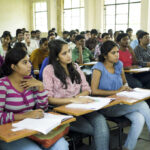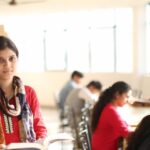Why Himalai IAS Offers the Best CDS Coaching in Bangalore?
There are various reasons because of which Himalai IAS has become one of the pioneering institutes for CDS coaching in Bangalore. They are as follows.
- Offers guidance according to the recent CDS exam pattern
- Include both weekend and regular classes for the students
- Experienced tutors and faculty assist the candidates in cracking the CDS test by providing handouts
- Offer CDS coaching at a reasonable and lower price than the other institutes in Bangalore
- Maintain a friendly relationship with the students
- Students can approach the teachers anytime to clear their doubts
- Include a success rate in the CDS exam of 70% to 90%
- Connects the aspirants with their ultimate goal of passing out the CDS examination
- Offer both online and offline class options to the students
- Identifies the weaknesses and strengths of the students
- Help in developing the required skills for passing out the CD examination
- Complete the entire syllabus much before time
- Frequent revision classes to brush up on the old topics
- Mock tests based on the pattern of the CDS test
- One to one attention of the tutors to the candidates
About CDS Exam (Combined Defense Services Examination) is conducted by the Union Public Service Commission (UPSC).
For the Recruitment of
- Indian Army,
- Navy and
- Air Force.
This exam consists of two stages such as the
- Written test and
- SSB Interview
CDS syllabus of the written test includes three sections:
- English Language,
- General Knowledge and
- Elementary Mathematics.
After cracking CDS theoretical written test the qualifying candidates need to prepare for two-staged SSB Interview.
Through this interview, recruiters will recruit the candidates as per their capability and preference.
Himalai coaching classes features of NDA
1. Complete syllabus coverage - Classes are molded around General Studies in application to UPSC CDA
English Language
General Knowledge
Elementary Mathematics
Trigonometry.
Analytical Geometry:
Statistics
2. Personalized strategy based coaching - We understand the requirements of Students and Personalize the Strategies for each student.
3. Flexible Learning - Online Live classes or classroom training or both available as preferred by students
4. Life Time Validity - We support you till you clear the exams and get into your dreamed services.
5. Teaching Approach – CDA - syllabus Result oriented coaching
a. Foundation classes – Focus on basic from NCERT Text book and
other standard resources
b. Advanced classes – Subject wise Concepts clarity in application with
Current affairs, India year book, Government documents etc.
c. Integrated course – Prelims cum Mains oriented classes for easy
understanding and quick preparation.
d. Special class – Exclusive classes for relevant posts in SEBI
6. Smart Tricks - Smart learning of the Quantitative aptitudes and Reasoning in application with basics of mathematics and Applied maths
7. Speed Maths – Classes are well trained for the quick and speedy way of answering without depending upon traditional method of mathematics
8. Teaching Faculties –Classes are conducted by recently cleared officers and Subject Experts dedicated to impart right dos and don’ts and teaching methodology
9. Live Test Series and Quizzes – Test are conducted regularly both on Online and Offline Daily, Weekly and Monthly on Current affairs, subject wise, topic wise and chapter wise. Written Assignments for mains will be initiated during prelims preparation.
10. Current Affairs – Exclusive classes, materials, quizzes and periodicals for Current Affairs on Monthly, weekly and daily
All are well specialized on Exams standards
State and National Affairs
International Affairs
Contemporary issues specific to Socio economical India
Special focus on Editorials
Government of India Events and schemes
International Organization etc.
11. SSB Interview – Live sessions are something which are conducted as per the live Examination of SSB board for Real experience
12. General Awareness – Along with daily current affairs, Security Exchange Board of India will also question on the static knowledge of General Awareness we ensure our students are well equipped with all as per the standards of UPSC CDS Recruitments.
CDS Exams ELIGIBILITY
(a) Nationality: A candidate must be unmarried and must either be:
(i) Citizen of India, or
(ii) Subject of Bhutan, or
(iii) Subject of Nepal, or
(iv) Tibetan refugee who came over to India before the 1st January, 1962 with the intention of permanently settling in India, or
(v) a person of Indian origin who has migrated from Pakistan, Burma, Sri Lanka and East African Countries of Kenya, Uganda, the United Republic of Tanzania, Zambia, Malawi, Zaire and Ethiopia or Vietnam with the intention of permanently settling in India.
Age Limits, Sex and Marital Status:
(i) For IMA(Indian Military Academy) —Unmarried male only are eligible.
(ii) For Indian Naval Academy—Unmarried male only are eligible.
(iii) For Air Force Academy— 20 to 24 years (Upper age limit for candidates holding valid and current Commercial Pilot Licence issued by DGCA (India) is relaxable upto 26 yrs. i.e only are eligible.
Note: Candidate below 25 years of age must be unmarried. Marriage is not permitted during training. Married candidates above 25 years of age are eligible to apply but during training period they will neither be provided married accommodation nor can they live with family out of the premises.
(IV) For Officers Training Academy—(SSC Course for men) unmarried male candidates
(c) Educational Qualifications:
(I) For I.M.A. and Officers’ Training Academy, Chennai — Degree of a recognized University or equivalent.
(II) For Indian Naval Academy—Degree in Engineering from a recognized University Institution.
(III) For Air Force Academy—Degree of a recognized University (with Physics and Mathematics at 10+2 level) or Bachelor of Engineering.
- Graduates with first choice as Army/Navy/Air Force are to submit proof of
- Graduation/provisional certificates on the date of commencement of the SSB Interview at the SSB.
- Candidates who are studying in the final year/semester Degree can also apply
CDS Exams scheme, standard and syllabus of the examination
- SCHEME OF EXAMINATION
- The Competitive examination comprises:
(a) Written examination.
(b) Interview for intelligence and personality test
- Stage 1 exam pattern For Admission to Officers’ Training Academy
Note – THERE WILL BE PENALTY (NEGATIVE MARKING) FOR WRONG ANSWERS MARKED BY A CANDIDATE IN THE OBJECTIVE TYPE QUESTION PAPERS.
(i) There are four alternatives for the answer to every question. For each question for which a wrong answer has been given by the candidate. One third (0.33) of the marks assigned to that question will be deducted as penalty.
(ii) If a candidate given more than one answer, it will be treated as a wrong answer even if one of the given answers happens t The maximum marks allotted to the written examination and to the interviews will be equal for each course i.e. the maximum marks allotted to the written examination and to the interviews will be 300, 300, 300 and 200 each for admission to the Indian Military Academy, Indian Naval Academy, Air Force Academy and Officers’ Training Academy respectively..
CDS exams STANDARD AND SYLLABUS
The standard of the papers in Elementary Mathematics will be of Matriculation level.
The standard of papers in other subjects will approximately be such as may be expected of a graduate of an Indian University.
UPSC CDS Exams SYLLABUS
- ENGLISH – The question paper will be designed to test the candidates’ understanding of English and workman like use of words.
- GENERAL KNOWLEDGE – General Knowledge including knowledge of current events and of such matters of everyday observation and experience in their scientific aspects as may be expected of an educated person who has not made a special study of any scientific subject. The paper will also include questions on History of India and Geography of a nature which candidate should be able to answer without special study.
ELEMENTARY MATHEMATICS
- ARITHMETIC –
- Number System — Natural numbers, Integers, Rational and Real numbers, Fundamental operations, addition, subtraction, multiplication, division, Square roots, Decimal fractions. Unitary method, time and distance, time and work, percentages, applications to simple and compound interest, profit and loss, ratio and proportion, variation.
- Elementary Number Theory— Division algorithm. Prime and composite numbers Tests of divisibility by 2, 3, 4, 5, 9 and 11. Multiples and factors, Factorization Theorem. H.C.F. and L.C.M. Euclidean algorithm. Logarithms to base 10, laws of logarithms, use of logarithmic tables.
- ALGEBRA – Basic Operations, simple factors, Remainder Theorem, H.C.F., L.C.M., Theory of polynomials, solutions of quadratic equations, relation between its roots and coefficients (Only real roots to be considered). Simultaneous linear equations in two
- Unknowns— Analytical and graphical solutions, Simultaneous linear in equations in two variables and their solutions, Practical problems leading to two simultaneous linear equations or in equations in two variables or quadratic equations in one variable & their solutions. Set language and set notation, rational expressions and conditional identities, Laws of indices.
- TRIGONOMETRY – Sine ×, cosine ×, Tangent × when 0° < × < 90° Values of sin ×, cos × and tan ×, for × = 0°, 30°, 45°, 60° and 90°
- Simple trigonometric identities.
- Use of trigonometric tables.
- Simple cases of heights and distances.
- GEOMETRY – Lines and angles, Plane and plane figures, Theorems on
(i) Properties of angles at a point,
(ii) Parallel lines,
(iii) Sides and angles of a triangle,
(iv) Congruency of triangles,
(v) Similar triangles,
(vi) Concurrence of medians and altitudes,
(vii) Properties of angles, sides and diagonals of a parallelogram, rectangle and square,
(viii) Circles and its properties including tangents and normals, (ix) Loci.
- MENSURATION- Areas of squares, rectangles, parallelograms, triangle and circle. Areas of figures which can be split up into these figures (Field Book), Surface area and volume of cuboids, lateral surface and volume of right circular cones and cylinders, surface area and volume of spheres.
- STATISTICS– Collection and tabulation of statistical data, Graphical representation frequency polygons, histograms, bar charts, pie charts etc. Measures of central tendency.
Stage 2 : INTELLIGENCE AND PERSONALITY TEST
The SSB procedure consists of two stage Selection process – stage I and stage II. Only those candidates who clear the stage I are permitted to appear for stage II. The details are:-
(a) Stage I comprises of Officer Intelligence Rating (OIR) tests are Picture Perception Description Test (PP&DT). The candidates will be shortlisted based on combination of performance in OIR Test and PP&DT.
(b) Stage II Comprises of Interview, Group Testing Officer Tasks, Psychology Tests and the Conference. These tests are conducted over 4 days.
The personality of a candidate is assessed by three different assessors viz.
- The Interviewing Officer (IO),
- Group Testing Officer (GTO) and
- The Psychologist.
There are no separate weightage for each test. The marks are allotted by assessors only after taking into consideration the performance of the candidate holistically in all the test. In addition, marks for Conference are also allotted based on the initial performance of the Candidate in the three techniques and decision of the Board. All these have equal weightage.
The various tests of IO, GTO and Psych are designed to bring out the presence/absence of Officer Like Qualities and their trainability in a candid
Admissions – Classroom enrollments for CDA are started, join today to grab 23rd year celebration offer and introductory offer.




